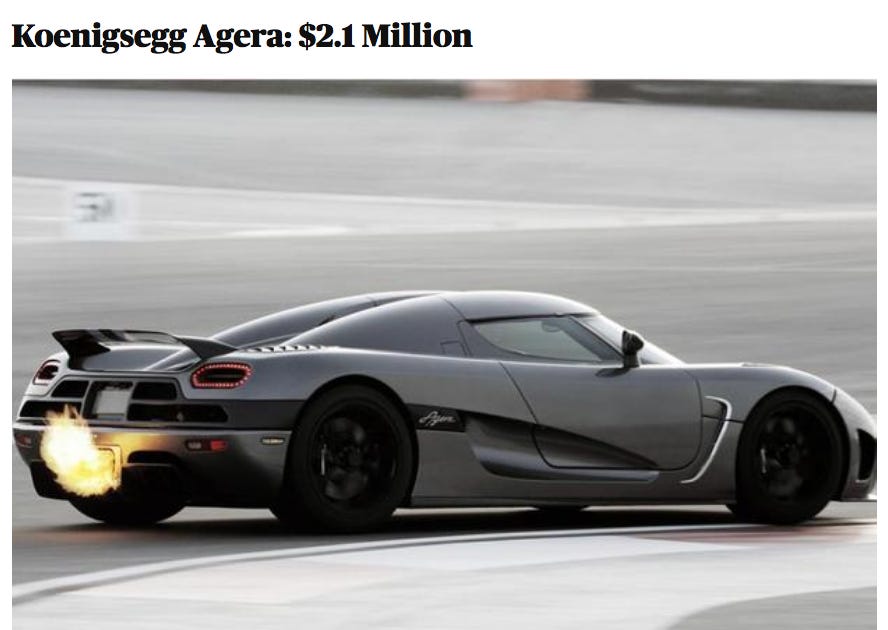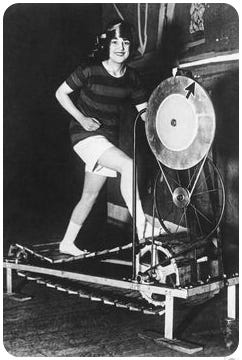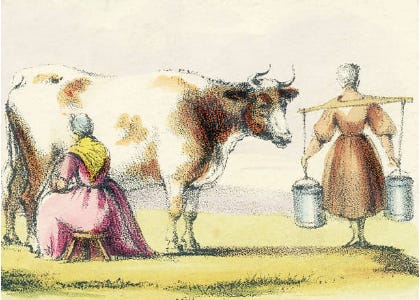In an update to the rhetoric of the anti-establishment movement during the 1960’s and 1970’s (some Left and some Right, and much wrong—especially in retrospect), it may be time to more precisely clarify strategic approaches in opposing (or replacing) the toxic attributes of the A.I. Matrix. In short—the deep state’s war machine and propaganda outlets are obsolete in a time of expansive explorations in human consciousness. The devil is found in the details however, and the A.I. juggernaut is an ‘engine’ that many well-intentioned people want to join so they may create revenue streams during the technocratic putsch.
“Time to fly…”
“Word to World Fit”… the parameters for Human participation and the dominance of human intelligence…
…a neuro-linguistic approach in order to diffuse the effects and influence of toxic A.I. and introducing a Lexicon which dispels the influence and power of hypnotic suggestion. Our ‘Human Word’ (Mind) designs the future—not some A.I. template operating from a cloud owned by a small group of elite technocrats.
How smart is a S.M.A.R.T. city when human intelligence is no longer required? Once again we see the evidence that the miracles of A.I. and population management (and control) are not really meant for us. But the A.I. technocratic program most definitely aids the ruling elite and their lieutenants within the world’s governments in maintaining their order.
What is neuro-linguistic programming?
Neuro-linguistic programming studies the ways our thoughts affect our behavior. It looks at the ways our brains interpret the signals they receive and how these interpretations affect what we do. It does this through language – the linguistic part of neuro-linguistic programming techniques. By examining how our brains process information, NLP techniques help us to look at our thoughts, feelings and emotions as things that we can control, rather than things that passively happen to us.—from Tony Robbins website
Silly-Con Valley Billionaires Club 101
Basics of the AI cyber-human-sphere:
“The term ‘Artificial Intelligence’ was coined by John McCarthy in 1955. He described the problem of Artificial Intelligence as “that of making a machine behave in ways that would be called intelligent if a human were so behaving.”
“In pop-technology writings, it is common to read about a distinction made between what is called Artificial Narrow Intelligence and Artificial General Intelligence—often abbreviated as ANI and AGI respectively. The terms are meant to refer to categories of machines—both existing and hypothetical. The distinction is problematic and the terms are often used with little precision or consistency.”
“General AI” is often described as “human-level AI.” Though only hypothetical, its crowning feature is a general problem solving ability that enables it to learn new tasks across several domains. This feature is emphasized so frequently that those who talk about general AI seem to assume that this is the most relevant feature of human intelligence. Sometimes the term “General AI” is used synonymously with “Strong AI” (not to be confused with its original meaning). The concept of General AI is ambiguous between the simulation/emulation distinction.
Is human-level AI human-like in terms of its power to simulate human speech and behavior? Or, is it human-like because it can emulate human intelligence and consciousness? Understanding the difference will be important for future legal, ethical, and social concerns.”
—gavitron/axiomdesign—philosophy of language
“Organizations that design and deploy artificial intelligence (AI) systems increasingly commit themselves to high-level, ethical principles. However, there still exists a gap between principles and practices in AI ethics. One major obstacle organizations face when attempting to operationalize AI Ethics is the lack of a well-defined material scope. Put differently, the question to which systems and processes AI ethics principles ought to apply remains unanswered.”—excerpt from springer.com
The term,“Matrix” is part of the AI lexicon:
“Due to this structure, the Matrix represents the most comprehensive, but also the most complicated, model for how to classify AI systems.”
“In theory, a broader deployment is coupled with greater risks than a narrower one, and a more mature AI system poses fewer risks than a less mature one.”
“Further, the use of AI systems poses different ethical challenges in different sectors. Healthcare, for instance, is often considered a critical sector since even minor disruptions may have severe consequences for the health and safety of human beings.”
“…not all AI systems in a critical sector are critical. For example, a hospital’s administrative time tracking systems need not necessarily be considered a critical system.”
“Time-tracking?”…This prompts the query: ‘money as time?’… ‘Time is money?’…and other hackneyed tropes from the annals of assembly line production. All of which suggests ‘man as machine’, or prisoners of time.
1995-2000…The Dot.Com Boom
Here’s an article excerpt that was first published in December of 2000:
“…The mania for technology stocks in 2000 had all the ingredients for a roller-coaster ride from boom to bust - glamorous sounding products that investors knew little about, avarice, an economy firing on all cylinders, some dashing young entrepreneurs, a small army of cheerleaders in brokerage houses and in the media peddling the line that the rules of business had been rewritten.
Yet what it did not have was the ability to rewrite the rules of economics. When the historians come to write the story of the dot.com bubble their epitaph will be the same as that penned after the madness ended in 17th century Holland, London in 1720 or Wall Street in 1929: it wasn't different this time.”—The Guardian
From Freeways To The High Speed Net
A brief recap of the socio-economic infrastructure during the twentieth century that came to define our perceptions of reality…and an A.I. Matrix paradigm—
The Twentieth Century revolved around fantastic advances in transportation. Speed and finance were emphasized. Car culture drove the US economy. The automobile was intrinsic to how we came to perceive the world and modern lifestyles. New human life was conceived in the back seats of Chevrolets and Fords. Interstate highways became part of the military infrastructure, and supported the creation of corporate franchises and strip malls. For many people, the car that they drove was also an identity marker: the dads who drove the station wagons, or the swinging bachelors driving an Italian sports car—both images were icons and symbols that Madison Ave. could exploit in selling the consumer the American Dream. Mad men generally defined a masculine culture.
Cars were “sexy” and “cool” and “bitchin.” Films depicted car chase scenes where cool dudes challenged other cool dudes in high-speed games of chicken. In this regard, the movies that come to mind include: “American Graffiti” (prod. 1973, no less than a George Lucas film—before ‘Star Wars’); “The California Kid” (prod. 1974, starring a young Martin Sheen who resembled James Dean); “The Italian Job” (prod. 1969, starring a very groovy Michael Caine ); “LeMans” (prod. 1971, starring Steve McQueen); and “Rush” (2013, starring Chris Hemsworth, and Daniel Brühl).
[*ed. note: I included “Rush” even though it’s a film product of the 21st century due to its relationship with the latter day 20th century film genre; Ron Howard was the director, and he was a TV product of the 1960’s—as the character “Opie” in “The Andy Griffith Show”]
This is a very short list, and yet indicative of how car films evoke feelings of freedom, speed, and the cool of an iconic actor like Steve McQueen. Movies supported imagery that defined the culture of speed and freedom found on the freeway.
Movies helped to sell cars.
When women became a larger part of corporate leadership, films like “Thelma & Louise” emerged as cultural markers. Times had changed. And yet, when one thinks of an oligarch or a race car driver in today’s realm, we usually think of men.
Back to the Future…
The ‘Internet Of Things’ is Born
Car culture is now passé in the sense of unique auto body styling. Most cars look generic, as far as identity markers go. Instead of cool or sexy, the present day virtue signalling markers include the terms: ‘fuel efficient’ and ‘electric.’ At least the brand name, “Tesla” may prompt some folks to explore the legacy of Nikola Tesla. Most of the auto brands lack any significant design distinctions— unless one can afford a $237,500 McLaren or the…
We might presume that the auto ‘brand’ and price tag have come to mean more than how groovy a person’s garage-built hot rod looks cruising along Main St on a Saturday night. Materialism has reached its apex, and along with the ‘money as king’ ego factor, a persons prestige may either be defined by the annual salary (with perks) or the mansion in an upscale neighborhood. Some might think that this is nothing new; however, I’d suggest that the difference between 2024 and 1924 has to do with decades of Television programming and Mad ave.
Consider the message of a silly sitcom like the Beverly Hillbillies from the 1960’s—a rags to riches spoof on the classless nouveau riche. Even when we fast forward to the 1980’s or 90’s, the sarcasm of Kramer or Seinfeld, or the snarky cynicism of Bart and Homer Simpson might allude to the lust for the good life and ego-recognition. Most of the media outlets are selling us all on the idea of prosperity and the treasures awaiting us. The lure of the American dream is still alive even as Bill Gates tries to convince the world that individuality is the enemy of a functional society. The concept of a deeper more profound American dream always trumpeted the values of individual initiative and contributing something of value to society. In the words of John F. Kennedy, “Ask not what your country can do for you, but what you can do for your country.”
An interesting individual—
The 21st Century Path to Billionaire Status
Billionaires are the new millionaires. What’s the road to riches look like in 2024?
Other than money-laundering as a congressman, the ‘Internet of Things’ seems like the road to greater financial stability. Silicon Valley multi-millionaires are now a well-known stereotype. Real Estate is also a factor, and Warren Buffet (and now, Larry Fink of BlackRock) embodied this principle in his Land Lord schemes. As far as I’ve witnessed thus far, “Real Estate” is never “Virtual Estate.” Land is still a valuable tangible asset, as long as we can keep the Bank from foreclosing on the property. Aye, there’s the rub!…in actuality, we may lose house and property if dire economic circumstances should befall us—thereby suggesting that ownership was a virtual scam all along.
“Reality” ya say?
The transition from the auto-age into the tech-age is what interests me in terms of ego identity and perceptions of reality. The Matrix (or ‘simulacrum’) may be as old as the planet Earth (for all we know), and yet it is now recognized as a factor when considering how we interpret our shared reality. Recognizing the prison walls we agree upon and support via compliance is a radical game-changer; and language and neuro-linguistics are the parameters for compliance and societal inclusion. We are the children of a matrix of mind, and reality is largely a consensus agreement. Our ability to perceive the parameters of perception is the key to our freedom from programming.
Comparisons between the twentieth century auto lexicon and cyber lexicon:
Speed of data transmission— or a hot rod’s transmission…(it’s still geekdom, and size and speed are still the parameters of cool.)
The size of your computer’s hard-drive vs the size of your roadster’s engine—“What’s your operating system?” vs “How many cubic inches (or liters)?”… Horsepower vs microprocessor power—64 bit CPU’s? …Ford vs Chevrolet or Apple vs PC?…
Consumer marketing crosses the chasm between the past and the future as long as we define lifestyles in accord with consumption and retail profits.
Today’s operating lexicon remains relatively similar to the lexicon in 1960’s, and that’s why the world seems as if we’re Matrix-bound. Even going back as far as the Roman political era indicates that we are in some type of holding pattern. The Caesars were the elite family brand name once upon a time. Rome also had chariots, and today we have cars, and we are living within a “brand name” universe. A consumer lexicon riddled with thousands of brands and mind-numbing adverts pollutes our daily lives. It’s a wonder we can concentrate on anything other than what to buy next, and how to know if the product is really worth the ducats.
Hardware and mechanical attributes aside, the popular cultural lexicon and our language choices create a basis for reality that is a mental framework which literally defines how we spend our time and what our respective treadmills look like.
Cow Culture vs Car Culture vs Internet Culture
The Amish farmer arises at 5 am to milk the cows while the stock-trader arises at 7 am to drink his espresso and view his email alerts before heading to whatever is left of Wall St. Or perhaps the lock-down conspiracy redesigned the office worker’s time management structure, if the workers are still employed. The Amish farmer remains reasonably self reliant, while the corporate minion is tethered to a fragile techno-dystopian casino game. Grid-lock feels like a prison sentence at times, while ‘same ol same ol’ provides a false sense of security.
The Toll we Pay
By the end of the twentieth century the interstate freeways (inter-state ‘Free’-ways) had a new lexicon companion: a tech language informed and defined by cyber highways, or the inter-net. The internet exacted tolls as royalties and download tokens, whereas the interstate highways often had toll roads. Also during this time of expansion and creating new ways to tax the citizens, the toll roads came to rely on more surveillance in the form of automated toll booths and speed-cams. The introduction of cameras was an incremental event that was barely noticed by the busy travelers on a time treadmill. Finally, the cameras were gathering data on our person in the form of iPhones and Androids, as well as laptops, tablets, and desktop computers. Even the television flat screens have cameras. Surveillance capitalism was born. We are no longer living in the realm of Kodachrome, it’s Chrome or Firefox nowadays and data mining rules the roost.
Below is an example of corporations getting data for free as the video game industry learns what games are most desirable and yield the greatest profits:
Computer Culture is defined by a language unto itself…
It all comes down to the understanding of code, aka “computer science.” Interesting how the term ‘science’ makes computers sound important and mysterious. Whereas the code of natural elements is in an entirely different universe than learning to code for computers. The natural elements are ‘real’ rather than virtual.
Machine logic is not the same as intuitive wisdom or understanding how nature works. One is connected to the very thing that has defined human beings for millennia, and the other, “coding” and the binary realm, is the language of A.I. —which also happens to be the preferred language of the elite Technocrats who wish to regulate and control our lives as cogs in the cyber-sphere.
If a human being is entrained to think within the mental framework of computer code are they actually being programmed to think and behave as a machine?
…In effect: ‘Code to World’ Fit.
To understand Matrix dynamics is to enable a possibility for freeing oneself from the matrix that enslaves our minds. To accept a machine as our superior, or as a new-improved form of intelligence is to invite such nonsense as, “Humans are hackable animals”, or to believe that human beings are just corporeal machines.
Creating a lexicon in order to foster Human Emancipation
Sovereign Beings vs Data Units (cyber-chattel)
Artificial political rhetoric in the ESG realm vs Free thinkers encouraged to express opinions without censorship
‘Trans’-National Policy vs a Constitutional Republic
The transhuman/transgender swindle vs awareness of programming and propaganda
The hierarchies: Matriarchy, Patriarchy, and now—Trannyarchy
End of gender = Population control
Warnings: A.I. dominance = The end of family
The Virtual Warehouse of Things
The Bezos Example—a brief bio of a twentieth century oligarch—reliant on the internet—
Main St has been downsized-while Wall St was upsized. Bail outs and corporate piracy are legal forms of corruption. Bezos became a very wealthy billionaire by practically erasing Main St. from American history. The consumer mind saw the Amazon shopping experience as a matter of ease and convenience—no need to drive on a congested freeway and go to a franchise at the mall. Besides, as Bezos recognized, Amazon could connect just about any product known to man with prospective buyers; whereas a storefront on Main St could never store as much inventory as the Bezos warehouse network. It was an ingenious business model, even though it destroyed the mom-and-pop shop economy. We’ve lost local culture (and localized economies of scale) in order to buy stuff made in China. [note of import: Bezos and Amazon observed the ‘Word To World Fit’ concept when they renamed ‘warehouses’ as ‘Fulfillment Centers.’—i.e., lipstick on a pig, and yet neuro-linguistics are significant when reshaping a consumer’s worldview.]
Real World and ‘Cyber Reality’ ™
Humans have been further monetized as cyber-chattel. Our time is *their time, it’s a continuation of plantation economics. Data mining exists in a cyber-reality, far removed from the coal mines of Wyoming and Kentucky. Data is just another form of currency during this tech-con period of magical wealth creation. In terms of the tech lexicon that populates contemporary biz-speak, “data-point” has replaced “bottomline.” However, ‘data points’ still suggest the bottom-line—which comes back to finance.
The tech-lexicon and resulting worldview are still rooted in a socio-economic finance matrix regardless of whether slaves are picking cotton, or assembling iPhones in sweat shops in China. This age is a transitional period of waking up to the potential for a functional ‘real’ world. As Russell Brand has stated many times (I paraphrase)—centralized governments and corporate power are anathema to freedom and greater prosperity for the 99%. Greed-flation is a result of corporate control and our collective disconnect from localized economies of scale.
*When we use the terms “They” or “Their”, and a person asks, “Who are They?”, the best retort may be, “Who do you think They are?” People who think that questioning authority and the imposed world view of a TV/Movie production complex, and the scripted political narratives is a waste of time, are sitting on the side lines. During the 1960’s the term, “boob-tube” came of age, roughly defined as: a mindless boob sitting in front of the TV screen in a somnambulant state of semi-consciousness (and also: as an infant suckling at the TV teat).
The advertisers and retail marketers had a captive audience. There it is again: “captive” audience—prisoners of a matrix— Word to World fit.
Re: the word, “Boob”—
Embracing Our Greatness and Capacity for Healing
The WEF/UN plan is nothing less than Techno-fascism. And most awakened humans in the working class realize that we are being conned once again. The proposed Cyber reality that depicts a techno future of comfort and ease is, in Real-world terms, another chapter in the Matrix chronicles. The globalists are counting on us to cower and whine as they push the limits of their tyranny.
Jeffrey Prather reminds us that freedom is ‘taken’— “so take it!”
Finally—this report from 1966 explaining the difference between a Republic and Democracy…
DAN SMOOT—
“A CONSTITUTIONAL REPUBLIC, NOT A DEMOCRACY”
“A democracy is a political system in which the people periodically, by majority vote at the polls, select their rulers. The rulers then have absolute power to make whatever laws they please, by majority vote among themselves.
In a constitutional Republic, the people also, by majority vote at the polls, select rulers, who make laws by majority vote among themselves; but the rulers cannot make any laws they please, because the Constitution severely restricts their law-making power.
The ideal of a democracy is universal equality. The ideal of a constitutional Republic is individual liberty.
Subversion of Language in this century-
Great strides have been made toward the goal of subverting our Republic and transforming it into a democracy. One tactic of the subverters is subversion of language.
“By calling the United States a democracy until people thoughtlessly accept and use the term, totalitarians have obscured the real meaning of our principles of government.”
Video-full length:
…one last relevant note re the con-man’s ‘mark’ and perception filters—
“…Other factors increasing our vulnerability include the “Lake Woebegone Effect” (an unwavering commitment to the notion that we are better than almost anyone else); “confirmation bias” (a predisposition to process evidence to support what we already expect to be true); “positivity bias” (confidence that good things will happen to us and we will manage to avoid bad things); “cognitive dissonance” (a predilection to ignore disconfirming information); “momentum theory” (a decision to move forward despite obstacles); “motivated cognition” (the process by which our views are reinforced by self-serving biases in perception); and “anticipated regret” (that generates a reluctance to relinquish a chance of “winning”).—Psych. Today
The fable for these times—
“Many years ago there lived an emperor who loved beautiful new clothes so much that he spent all his money on being finely dressed. His only interest was in going to the theater or in riding about in his carriage where he could show off his new clothes. He had a different costume for every hour of the day. Indeed, where it was said of other kings that they were at court, it could only be said of him that he was in his dressing room!”
“One day two swindlers came to the emperor's city. They said that they were weavers, claiming that they knew how to make the finest cloth imaginable. Not only were the colors and the patterns extraordinarily beautiful, but in addition, this material had the amazing property that it was to be invisible to anyone who was incompetent or stupid…”—The Emperor’s New Clothes






















